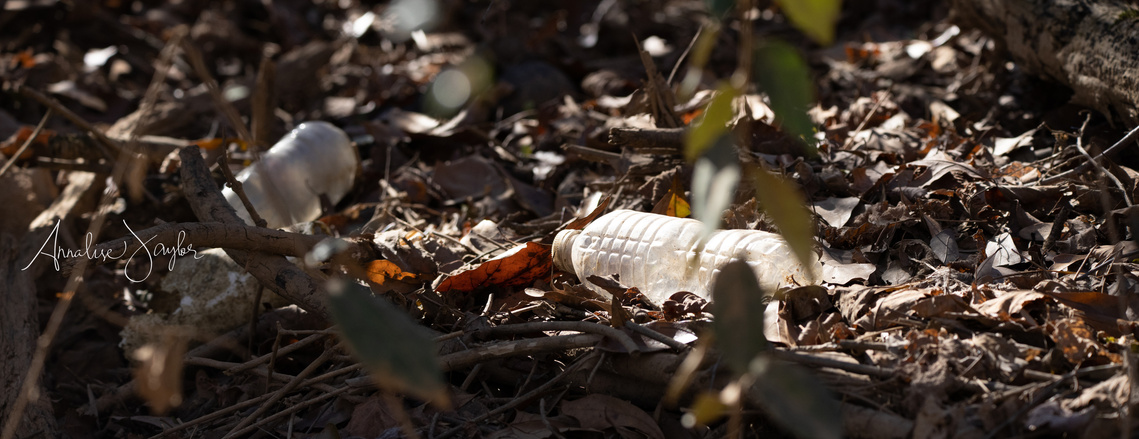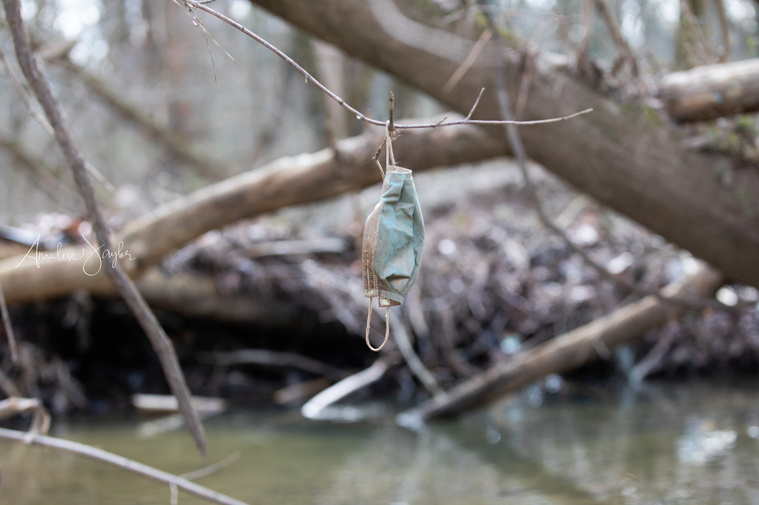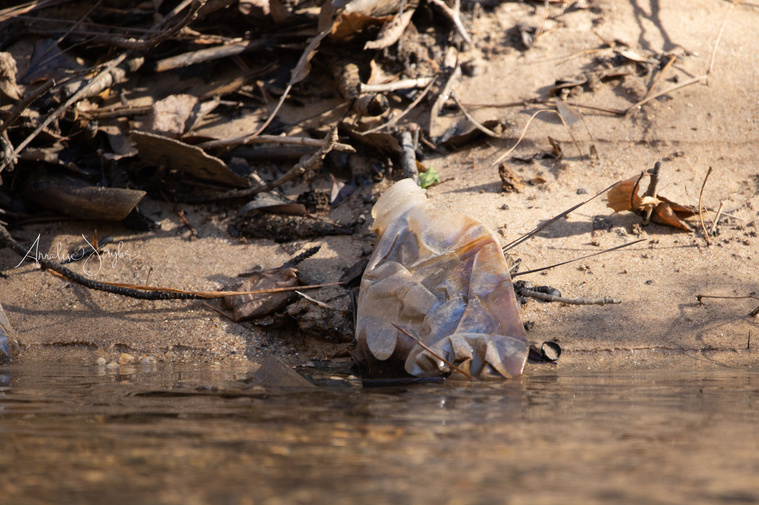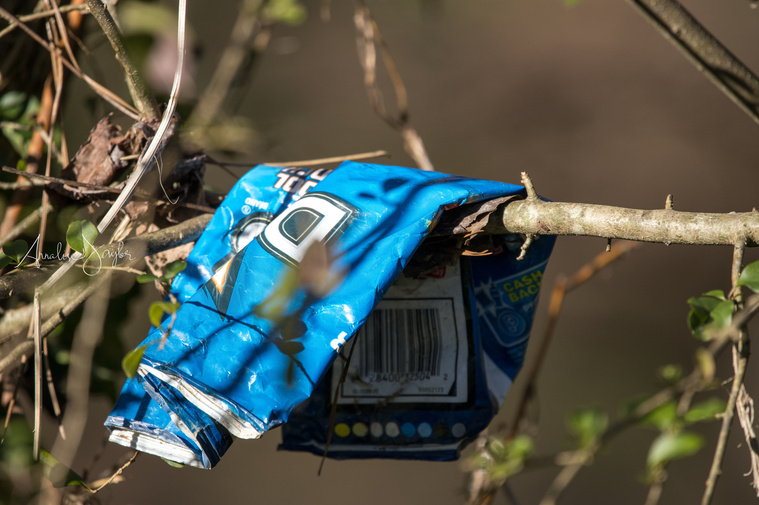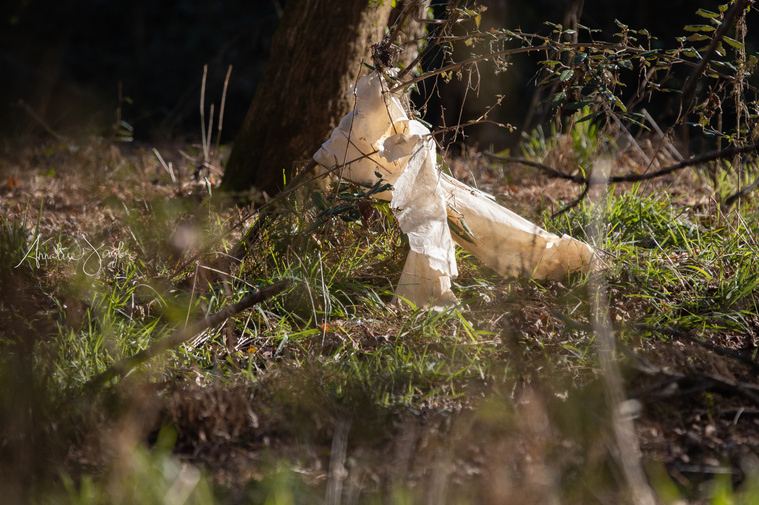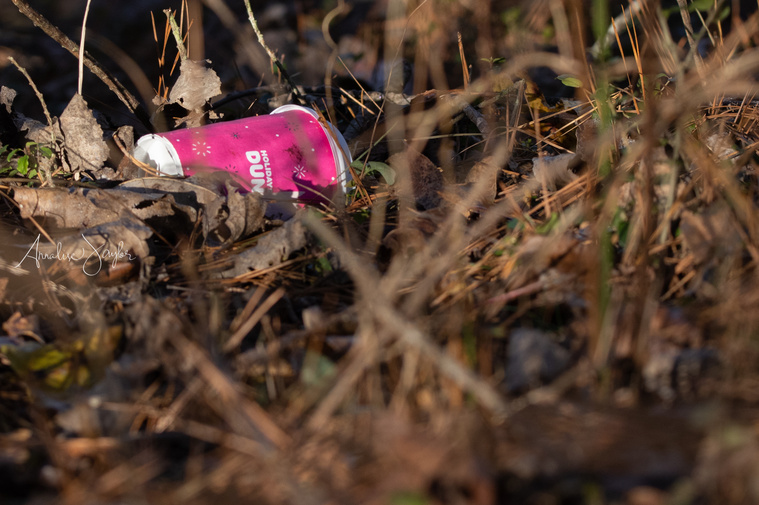#KillingIt (literally)
The Plastic Pollution Project by Annalise Kaylor
Suburbius Plasticus
Suburbius Plasticus establishing its territory near the Chattahoochee River.
While many suburbius plasticus individuals make their homes along ditches and the ground, climate change has forced them to adapt to nesting in trees and small shrubs to avoid rising sea levels. This species will likely stay here through early spring, but depart the area when the water levels rise and migrate downriver to a new location.
Maskus Coronaviscious
Rare sighting of a Maskus Coronaviscious. This species is normally found much closer to humans in a typical urban environment away from water ways.
In early 2020, the maskus coronaviscious saw its popularity soar. Once the novelty of ownership began to wear off, however, more people began releasing them in the wild, creating a problem much like you see here. In addition to the litter created by the maskus coronaviscious, their loopy edges create hazards for native species like birds and turtles, who can become trapped in the loops.
Diploplatus Botalia Plasticus (Bottle-shaped Diploplat)
The carcass of a Bottle-shaped Diploplat along the banks of Utoy Creek, in Atlanta.
In the same family as the suburbius plasticus, the bottle-shaped diploplat makes its home primarily away from people along tributaries and woodland edges. It has become exceedingly rare to see a bottle-shaped diploplat in its full plumage, as they are most often seen as carcasses, like the one shown here.
Indigo Rancherio
The Indigo Rancherio is not an uncommon species in the Piedmont region, but finding it in this woodland habitat in the winter is unusual. Indigo rancherio flocks tend to prefer a more dense urban area during the day time hours then retreat to their rookery at night with other flocks to stay safe from common predators.
Snowus Sheetalius (Snowy Draper)
Known for their brutal territorial disputes, the snowus sheetalius, more commonly known as the Snowy Draper, stakes its claim to nesting ground long before the rest of the migratory species make their way north for the spring time breeding season.
Snowy drapers will often stay in one place for an entire year and begin their molting process by the end of spring, continuing to molt throughout the summer and into the fall. It is not uncommon for their plumage to appear like sparse threads by early winter.
Zipiticus Plasticus
Another member of the plasticus family, the Zipiticus Plasticus is shown here in a non-native habitat near both deciduous and coniferous forests.
This species is more typically found in urban areas and places with an abundant human population. Zipiticus plasticus has been shown to follow the human population and create clusters where humans are most prolific. As a result, pest control companies are now offering a spraying service to help control the zipiticus as a pest. Sadly, just like mosquito sprays, when a homeowner chooses this treatment (even the "green" option), the spray cannot target ONLY the zipiticus, so the sprays also wipe out native bees, honey bees, dragonflies, butterflies and moths, and other pollinators crucial to our ecosystem.
Foamatus Dunkinia
Winter is a tough time for the Foamatus Dunkinia, a brightly colored species known for it's unusual wintertime breeding habits. It struggles to camouflage itself against the Earth's drab khaki and olive landscape, making it woefully difficult to hide from predators.
Humans have stepped in, however, happily tossing any foamatus dunkina species they find into the ditches and waterways to make sure there are plenty nearby for winter mating.
About This Project
#KillingIt (Litterly) is a spontaneous response to the massive amounts of plastic litter and trash that I see while I walk, hike, bike, and paddle my way through my conservation photography work. It is so ubiquitous, that I started feeling like each type of common plastic needed its own sort of species name, and thus, this satirical project of mock-influencer style social vignettes and still images was born.
Far and away the most common object I find is the single-use plastic water bottle. It is hands-down the most wasteful and problematic product in the world - it takes remarkable amounts of water and oil to simply produce the bottle, the carbon footprint of shipping the bottle is awful, and it isn't recycled into anything meaningful. Many people mistakenly believe that when they recycle a plastic bottle it is "remade" into another bottle, and that's just not the case.
About 50% of what we toss into the recycling bin is never recycled (conservatively). As an NGO photographer, my work has taken me around the world, often to developing countries where the excess plastic waste of the United States has been shipped. Families burn our plastic waste in pits next to their homes (where their children breathe in the smoke) for pennies per day. Their livestock will eat the plastic when food is sparse. These are images burned into my mind.
I'm proud to say I haven't had bottled water for more than two decades. Even when I travel to places where I can't safely drink from the tap, I bring my Lifestraw filter and a reusable bottle. Please join me in reducing your dependance on single-use plastics.

